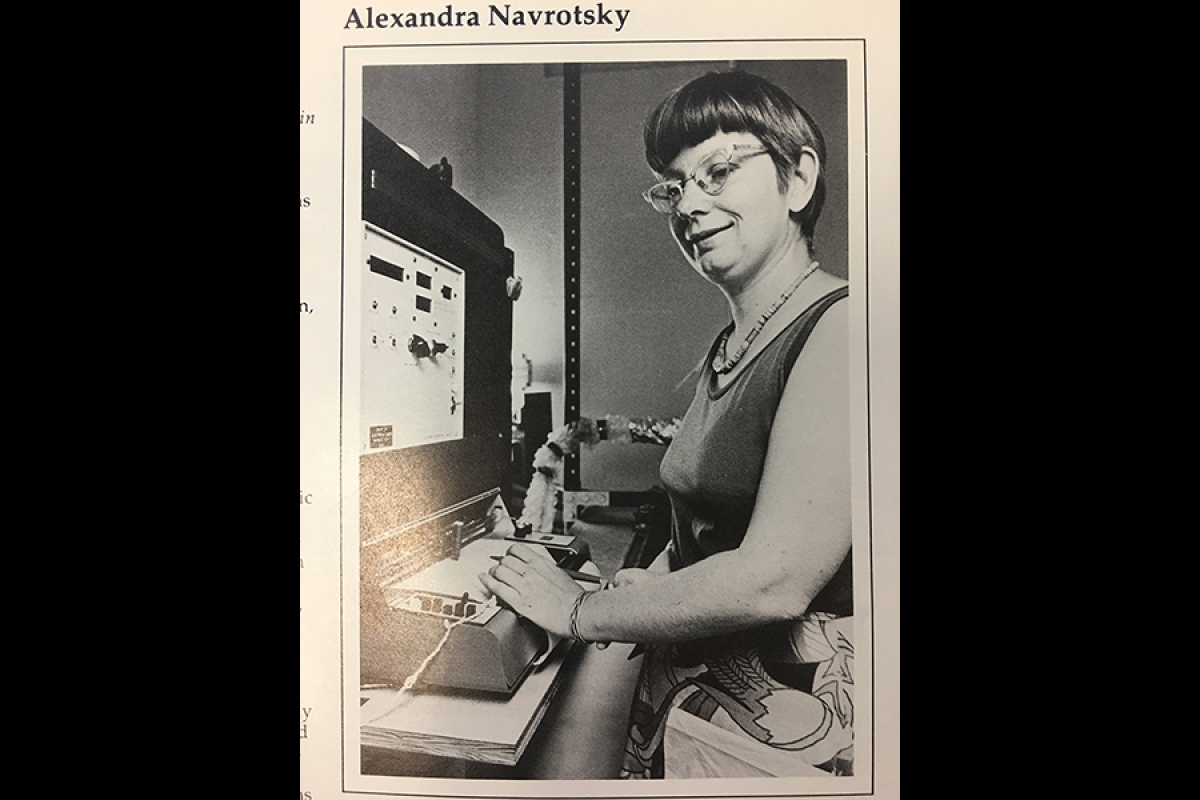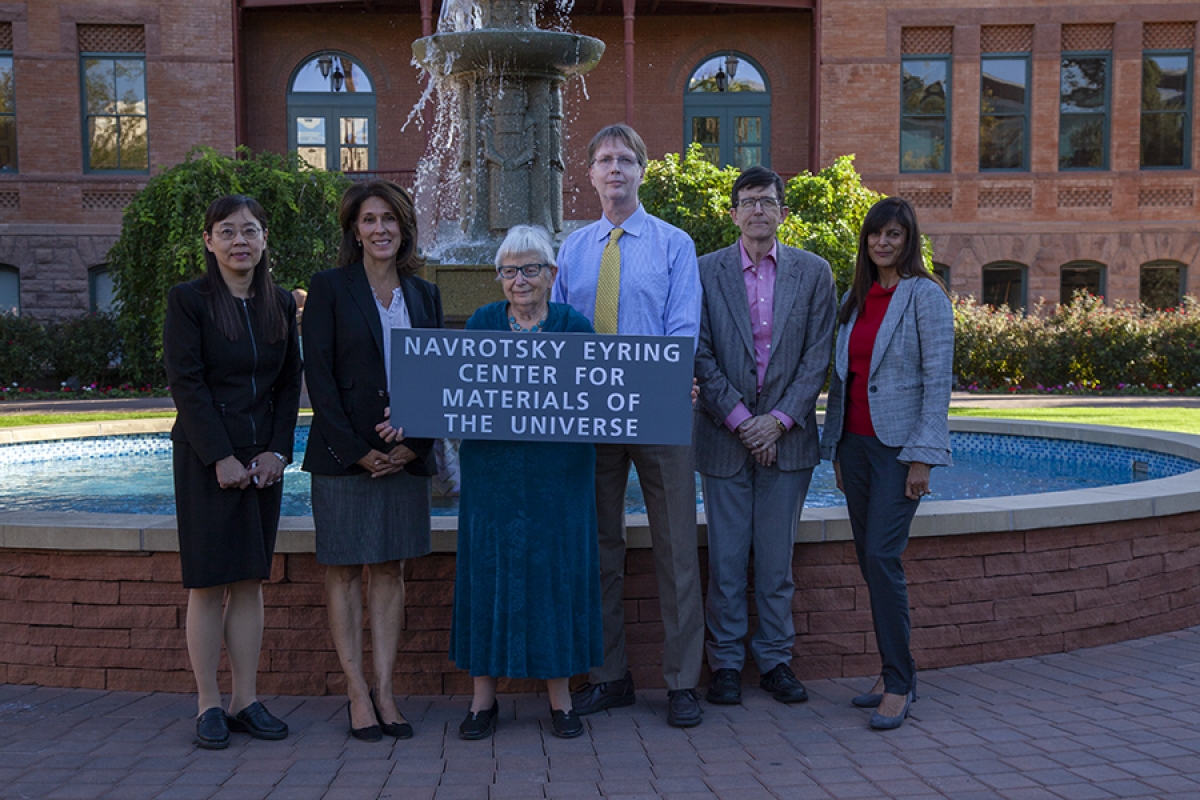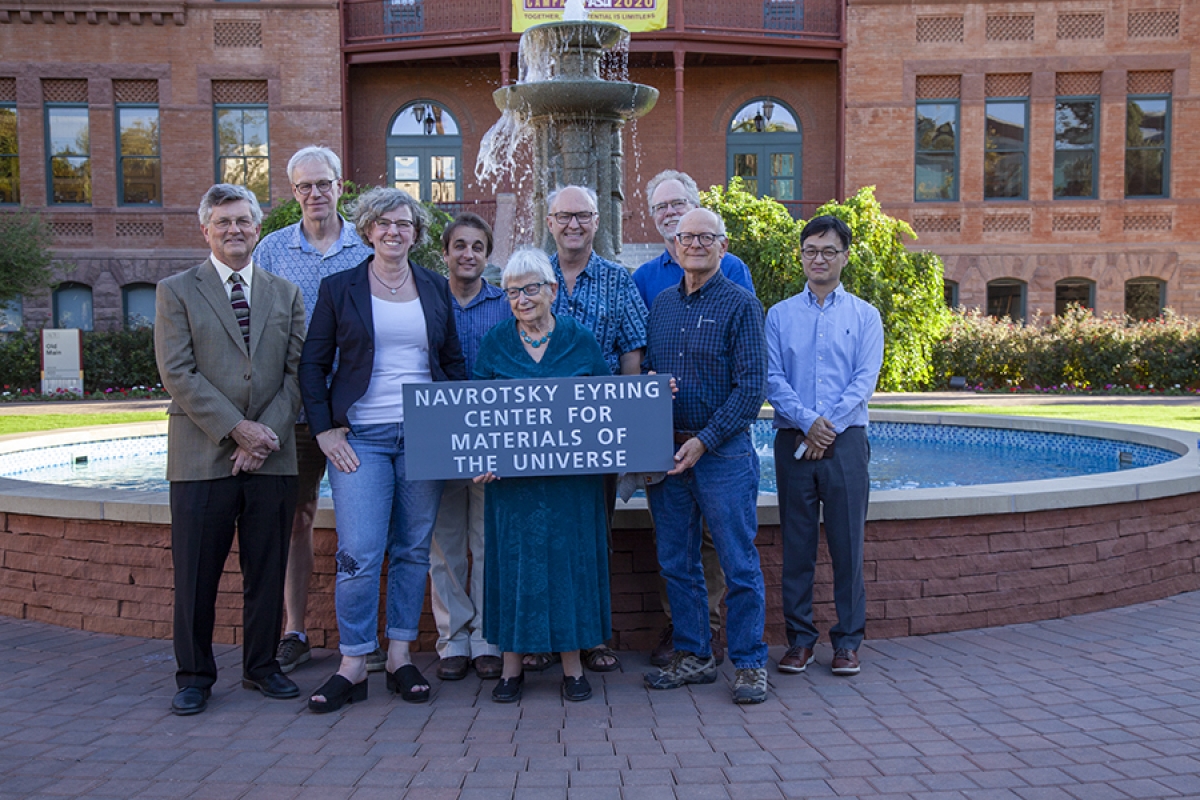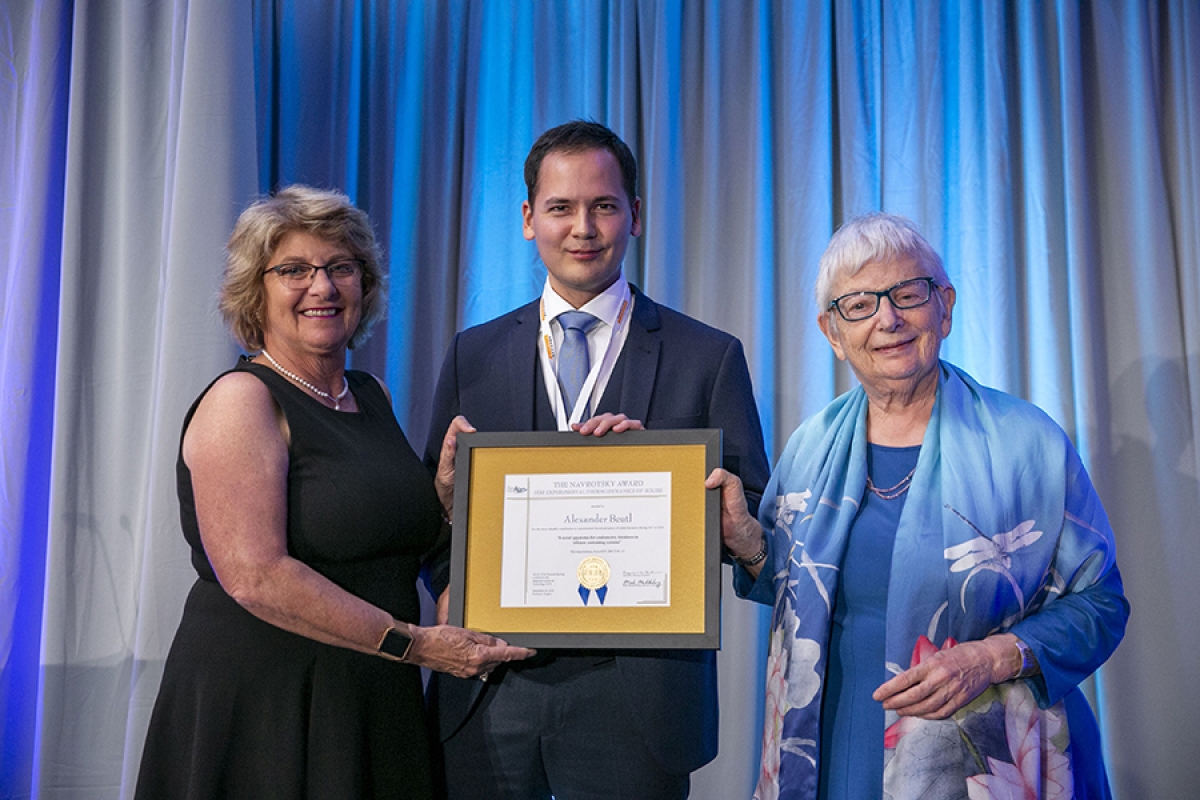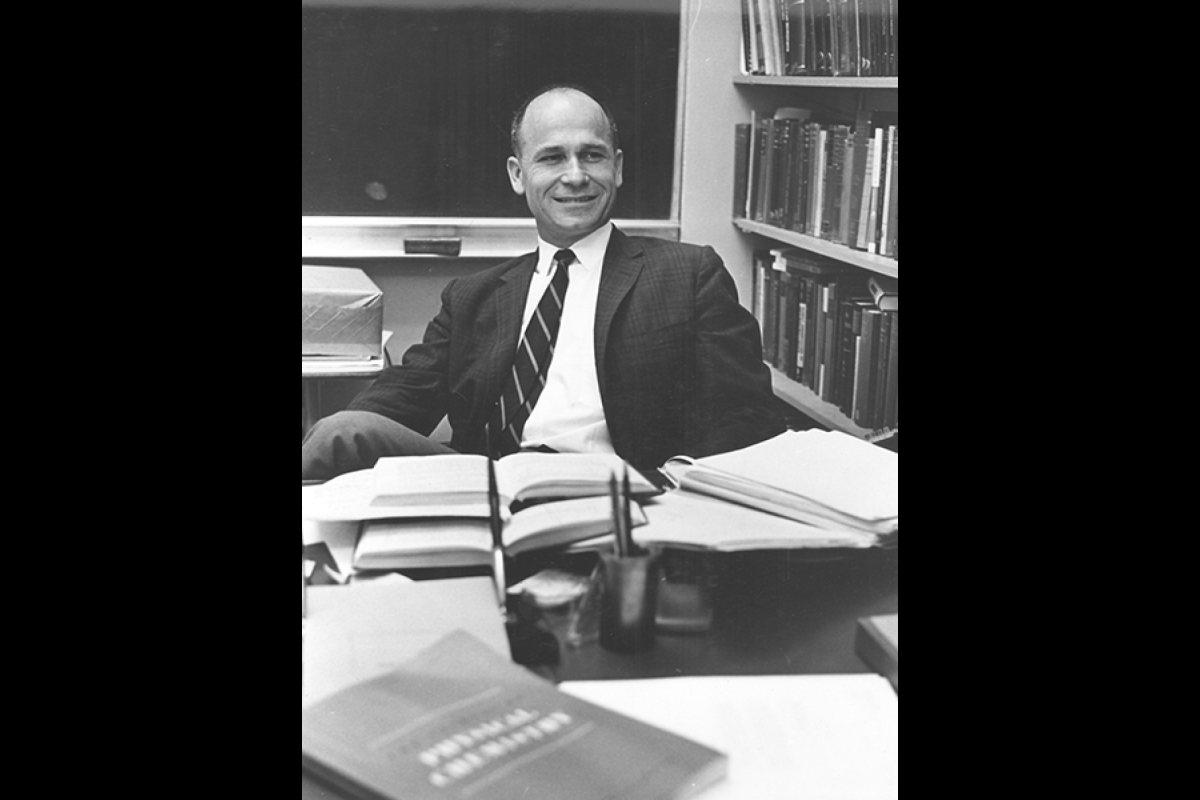Navrotsky comes full circle with opening of new ASU center
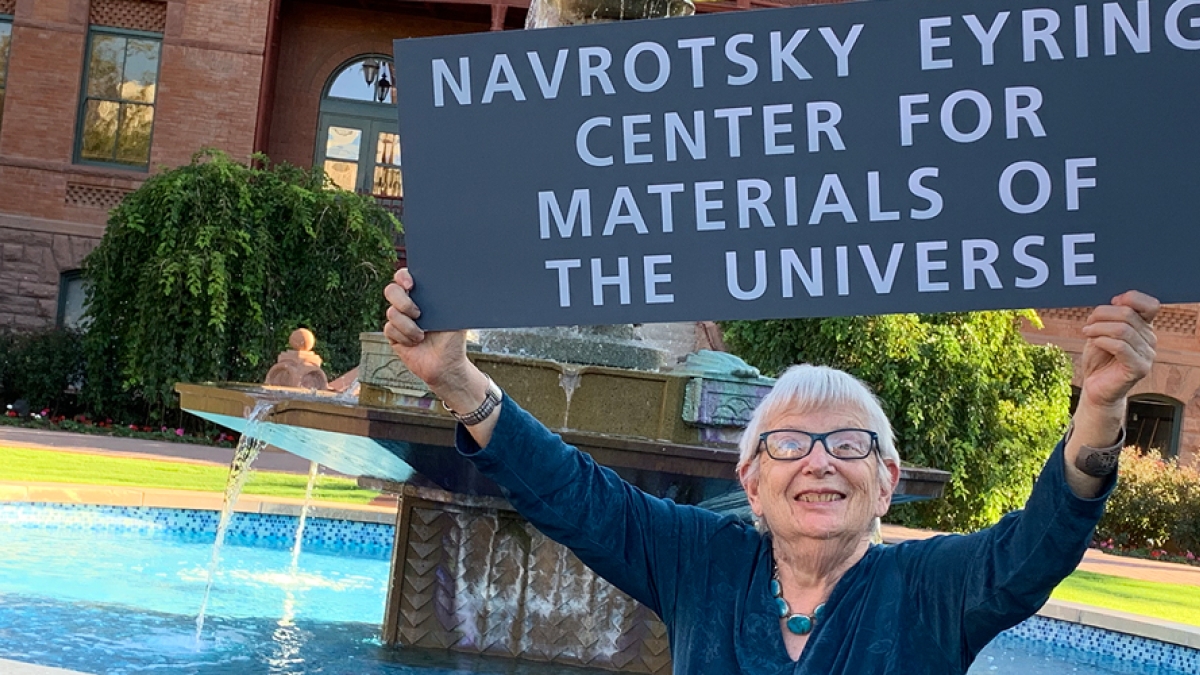
Professor Alexandra Navrotsky at the center's ribbon cutting ceremony. Photo by Mary Zhu
Alexandra Navrotsky is back at Arizona State University and the ribbon has been cut to open the center where she will do her next great work.
Navrotsky will rejoin ASU as a professor, in both the School of Molecular Sciences in The College of Liberal Arts and Sciences and the School for Engineering of Matter, Transport and Energy in the Ira A. Fulton Schools of Engineering.
After leaving ASU in 1985 for Princeton University, Navrotsky officially returned on Oct. 1, 2019, as a member of the National Academy of Sciences and the recipient of many other honors. With many adventures behind her, she is now extremely excited to return home and continue leaving her mark on an institution very close to her heart.
“Alex will lead the development of the Navrotsky Eyring Center for Materials of the Universe (MotU), that will involve the School of Molecular Sciences, the School of Earth and Space Exploration, the Department of Physics and the School for Engineering of Matter, Transport and Energy and other engineering faculty," said Professor Neal Woodbury, director of the School of Molecular Sciences. "Materials of the Universe will bring together scientists and engineers to form cross-disciplinary research teams to expedite humanity’s next steps in understanding and exploring the universe.”
“Building an interdisciplinary community of dedicated researchers who collaborate to make new discoveries and advance current understandings is one of our core strengths,” said Kyle Squires, dean of the Ira A. Fulton Schools of Engineering. “We’re excited to welcome Professor Navrotsky to our faculty. Her demonstrated leadership and expertise in the areas of solid state chemistry, thermodynamics and deep earth geophysics will be integral as we work with our counterparts to discover new materials and technologies.”
Materials define our very civilization: the stone age, the bronze and iron ages, the silicon age, and now, the age of complex materials integration. We made our first tools from rocks, and now we create complex materials that we doubt exist elsewhere in the universe — or do they?
Evolution over billions of years in diverse planetary environments may generate materials we know nothing about. The planets beyond our solar system reveal an ever-expanding diversity, from super-Earths and water-worlds to carbon-rich planets. Can a carbon-rich planet be a source of diamond, silicon carbide or some as yet undiscovered refractory material?
Can such materials self-assemble into natural analogues of composite ceramics and functional materials? Can processes in extreme environments concentrate elements that are difficult to find and mine on Earth? How do materials and their surfaces influence life, its origin and evolution? The universe is vast in time and space, and the permutations of planetary constituents seem endless.
“The study of materials and their applications from theoretical, computational, observational and experimental approaches is fundamental to so many areas of science and engineering,” said Meenakshi Wadhwa, director of ASU’s School of Earth and Space Exploration. “The Navrotsky Eyring Center for Materials of the Universe is a bold, forward-looking initiative that will leverage ASU’s leadership in a broad spectrum of these areas. At the School of Earth and Space Exploration, we are excited to participate in this initiative that could have broad ranging implications for understanding the workings of our planet, solar system and universe.”
“By crossing disciplinary boundaries, (the center) will naturally enable problem-based teaching in science education at many levels, preparing the next generation of scientists, engineers and entrepreneurs to sustain our nation’s prosperity,” said Professor William Petuskey of the School of Molecular Sciences who also directs the Advanced Materials Initiative at ASU. “Discoveries from the center will, in turn, inform materials science, where, more often than not, the finding of a new material with the right properties is the problem that impedes an innovation.”
The center's namesakes
LeRoy Eyring was an ASU Regents Professor of chemistry and a department chair whose instructional and research accomplishments and professional leadership at ASU helped to bring the Department of Chemistry and Biochemistry into international prominence. Navrotsky is exceedingly grateful to Eyring for hiring her in her first faculty position and for his constant encouragement and support.
“I am returning to an ASU which is much more dynamic than the one I left in 1985, and I am coming home to the Southwest I love,” Navrotsky said. “The opportunity to help build the Center for Materials of the Universe and involve old and new friends and colleagues in it, as well as broader efforts in materials, is an immensely exciting new adventure.”
Navrotsky's research interests lie at the intersection of solid state chemistry, geochemistry and materials science. Navrotsky has published nearly 1,000 papers on topics ranging from oxide superconductors to silicates deep in the Earth's mantle. Her research is mainly focused on the structure and the stability of both natural and synthetic materials along with their dependence on temperature and pressure. She also investigates the role of nanomaterials in geochemical processes and in pollutant transport.
Navrotsky earned her PhD in physical chemistry at the University of Chicago, where she also earned her MS and BS. After two years of postdoctoral experience, she joined the chemistry faculty at ASU in 1969. Navrotsky joined the Department of Geological and Geophysical Sciences at Princeton in 1985 and served as the chair from 1988 to 1991. In 1997, she moved to the University of California, Davis and became an interdisciplinary professor of ceramic, earth and environmental materials chemistry. In 2001, she was appointed the Edward Roessler Chair in Mathematical and Physical Sciences.
Among her many awards, she has received the prestigious V.M. Goldschmidt Award from the Geochemical Society, the Roebling Medal from the Mineralogical Society of America and the Harry H. Hess Medal from the American Geophysical Union. She is also an Alfred P. Sloan Fellow and a fellow of the American Geophysical Union, the Geochemical Society, the American Ceramic Society, the Mineralogical Society of Great Britain and the International Union of Pure and Applied Chemistry, and a member of the National Academy of Sciences and the American Philosophical Society.
Returning home to ASU
After returning to ASU, Navrotsky created, through the ASU Foundation, a gift and a bequest to support the advancement of materials science at ASU. She currently directs the newly formed Navrotsky Eyring Center for Materials of the Universe. Faculty and students with affiliations to the center will pursue and promote new ideas, discoveries and technologies in the broad field of materials, with an emphasis on planetary materials and processes; advocate for and seek new research and development funding opportunities; and provide outreach to expand these leading-edge fields. Funds may be used to support activities of the center with further cutting-edge research and education including, but not limited to, interdisciplinary postdoctoral support, graduate students and a program of seminars and workshops.
“The Materials of the Universe initiative will extend the range of conditions for new materials discovery to include conditions that exist elsewhere in the solar system or on exoplanets,” said Hilairy Hartnett, professor in both the School of Molecular Sciences and the School of Earth and Space Exploration. “This initiative will also enhance materials science research that will develop new detectors and spacecraft materials to enable new discoveries beyond our planet.”
“In science as in life, every day is a new adventure!” Navrotsky said.
Karin Valentine of the School of Earth and Space Exploration contributed to this story.
More Science and technology

Breakthrough copper alloy achieves unprecedented high-temperature performance
A team of researchers from Arizona State University, the U.S. Army Research Laboratory, Lehigh University and Louisiana State…

4 ASU researchers named senior members of the National Academy of Inventors
The National Academy of Inventors recently named four Arizona State University researchers as senior members to the prestigious…

Transforming Arizona’s highways for a smoother drive
Imagine you’re driving down a smooth stretch of road. Your tires have firm traction. There are no potholes you need to swerve to…


